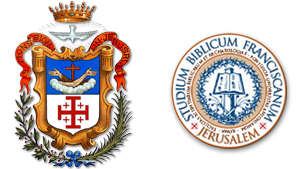...................................
[read in Italian] ![]()
Sebastiano Serlio (c. 1475 – 1554) was an architect from Bologna active in Rome, Venice and France. His most important contribution is the work I sette libri dell’architettura (“Seven Books of Architecture”), published sporadically between 1537 and 1575. The importance of Serlio’s theoretical work, enriched by a great series of woodcuts depicting a lot of architectonic examples, is its reinterpretation of Vitruvius’ lesson through the comparison with ancient remains and the experience of modern architecture.
| [click sulle immagini per ingrandirle / click on images to enlarge] |
This work was very successful since it provided numerous models and examples, so much so that Amico himself mentions him (1620, fol. Ss1r), even criticising one of its assumptions (Serlio, 3rd book ed. 1559, p. 91). The Library of the Custody holds a – rather incomplete and damaged – copy of Serlio’s work (shelfmark CIN A 84), perhaps the one used by Bernardino Amico. In the aforementioned page (about the so-called Tombs of the Kings, probably Queen Helena of Adiabene’s sepulchre), Amico indulges in a peroration for their listing among the treasures of the Holy City: «I do not see any reason why among the seven wonders of the world the Royal Caves are not celebrated and by men held in great admiration other than the fact that they are underground and unknown, as almost buried amid the shades, have not yet been brought to light, nor in our countries known. Wherefore, I, who have seen them and with diligence examined them have taken it upon myself to present them to the inquisitive readers, who, surprised with the great wonder they will find therein, will certainly say that the writers have done them a great wrong, who while with encomiums, eulogies and panegerics they have informed them of Diana’s Temple, the Egyptian pyramids, the walls of Babylon and other superb structures, they have failed to present clear and illustrious this great structure of the world» (1620, fol. Ss1r and Plans, p. 138).
